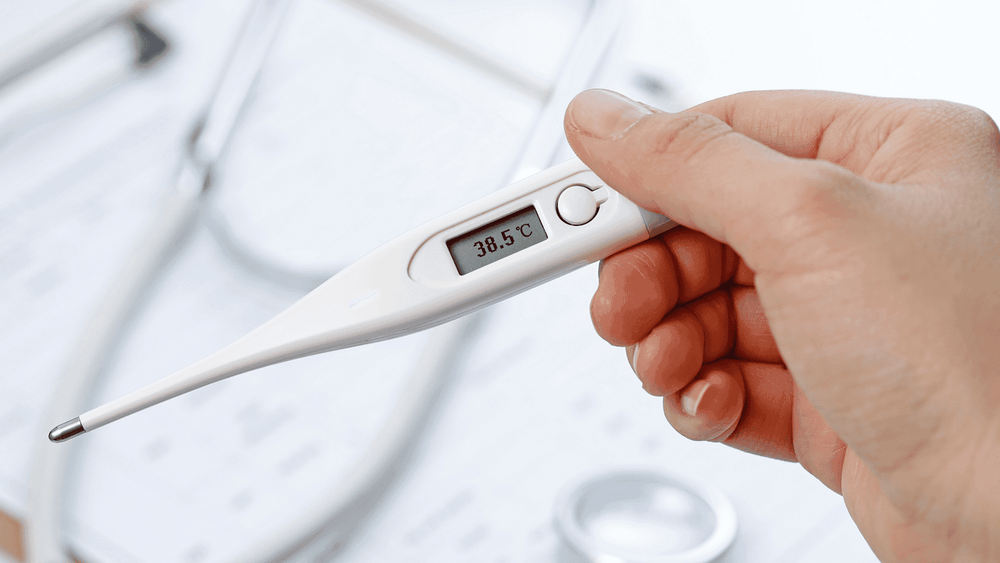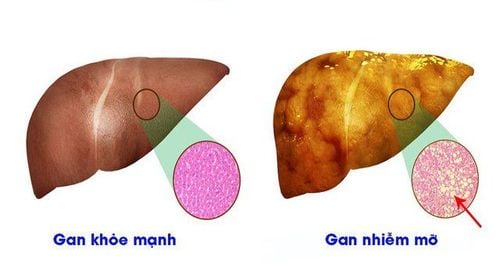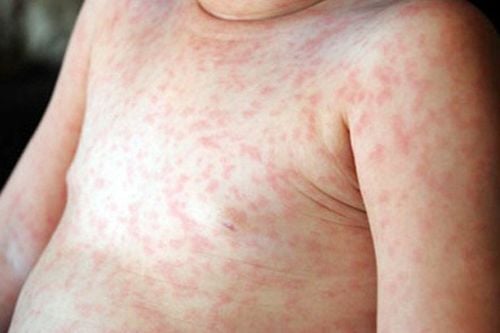This is an automatically translated article.
The article was professionally consulted by Specialist Doctor I Vo Thi Thuy Trang - Department of Medical Examination & Internal Medicine - Vinmec Da Nang International General Hospital.Convulsions in bacillary dysentery may be due to high fever. However, the febrile convulsion in this pathology may also be caused by the toxin of Shigella bacilli in the early, non-febrile convulsion form. Therefore, if you notice convulsions when you have dysentery, you need to go to the hospital immediately.
1. What is dysentery?
Dysentery is an infection of the gastrointestinal tract, caused by a family of intestinal bacteria called Shigella. The typical symptom of bacillary dysentery is diarrhea and is accompanied by mucus and blood.Shigella germs enter the human body through direct contact with germs in feces. In addition, Shigella bacteria can also enter people through contaminated food, drinking water or swimming pools. When entering the body, dysentery bacilli enter through the mouth, stomach, small intestine and then to the colon. In the colon, the dysentery bacillus reproduces and invades the mucosa and reaches the mesenteric lymph nodes.
After entering the intestinal mucosa, bacillus dysentery is destroyed and releases endotoxins and exotoxins, affecting the whole body, causing neurotoxicity and cardiovascular disease. In terms of local symptoms, the toxin causes inflammation, pain, vasomotor disturbances, hypersecretion, disturbances in water and electrolyte exchange as well as ulceration, mucosal necrosis, and bleeding. The consequences of Shigella bacteria for patients are systemic toxicity, dehydration as well as electrolyte and defecation disorders.

Triệu chứng điển hình của bệnh lỵ trực trùng chính là tiêu chảy và kèm theo nhầy, máu
2. Why convulsions in dysentery?
Convulsions in bacillary dysentery may be due to high fever. However, in addition to the cause of high fever, febrile convulsions in this pathology can also be caused by the toxin of Shigella bacillus in the early, non-febrile convulsion form. Therefore, if you notice a seizure in dysentery, you need to go to the hospital immediately.In addition, symptoms of shigellosis will usually begin to appear 1 - 2 days after exposure to the Shigella germ, but in some cases it can take up to 1 week. The symptoms include diarrhea with mucus and blood, the patient has abdominal pain, fever.
Usually, bacillary dysentery goes away and it can take weeks to months for the bowels to function normally again. In some cases, the disease can cause some complications such as:
Dehydration: Germs causing dysentery will cause continuous diarrhea symptoms, so the patient is often dehydrated; Rectal prolapse : The cause of this complication is the damage and increased peristalsis when pathogenic bacteria shed a layer of the rectal lining prolapsed out of the anus; Hemolytic uremic syndrome : Hemolytic uremic complications can lead to hemolytic anemia, thrombocytopenia and acute renal failure; Paralytic ileus: The patient's intestines will be paralyzed, there is no bowel movement to perform the task of expelling stool and gas. With this complication, if not promptly treated, your intestines will be dilated, the infection will cause peritonitis, ... threatening the patient's life; Reactive arthritis: This complication causes symptoms such as heat, redness, pain, and swelling of the joints.

Co giật trong lỵ trực trùng có thể là do sốt cao
3. Treatment of bacillus dysentery
The treatment of bacillary dysentery needs to combine antibacterial treatment with treatment of symptoms, complications and a reasonable diet. The treatment is as follows:Antibiotics: It is necessary to choose an appropriate antibiotic. In order to choose an appropriate antibiotic, it is recommended to enter the results of the antibiogram with the isolated dysentery strain. The principle of antibiotic use is not to use high doses, not to use a combination of many broad-spectrum antibiotics, and especially not to use it for a long time. Prevent dehydration and electrolytes: If dehydration and electrolyte disturbances increase, it will make dysentery worse, causing many complications. In case of mild dehydration, you should drink ORESOL or use porridge, yogurt, plain water with little salt. In case of moderate and severe dehydration, it is necessary to combine oral administration of ORESOL and intravenous infusion of Ringer lactate, 0.9% sodium chloride and glucose 5%... Potassium deficiency: Potassium supplementation is required for patients orally or veins depending on the degree of potassium loss. When there are signs of acidosis, add sodium bicarbonate. Cardiovascular support and support: For cardiovascular support, it is necessary to use Spartein 0.05 with a dose of 1-2 ampoules/day (intramuscular). In case of tachycardia, use Uabain 1/4 mg ́ with a dose of 250ml of 5% Glucose solution by slow intravenous infusion. To support birth, use Vitamin B1 30mg - 50mg/day injection or oral; Vitamin C 500mg/day. Anti-abdominal pain: Can warm the painful area for the patient or use medicine. However, it should be noted that opiate preparations should not be used to control diarrhea and prevent abdominal pain. Anti-febrile convulsions: In the case of high fever > 39°C in children, it is easy to cause convulsions in dysentery. Therefore, if the fever is high, a sedative should be used; At the same time, apply warm compresses, rubbing alcohol, fan, and take paracetamol in appropriate doses. Diet for dysentery: Along with antibiotics, nutrition is extremely important in the treatment of dysentery. In the first days of illness, you should eat light, liquid foods that are easy to digest. Then resume a near-normal diet. Avoid eating foods that are high in fiber, solid or high in fat and spices. It is best to divide into several meals, each meal is small. Breastfed babies should be encouraged to breastfeed more often.

Việc điều trị bệnh lỵ trực trùng cần kết hợp điều trị kháng khuẩn với điều trị triệu chứng, biến chứng và có chế độ dinh dưỡng hợp lý
4. Prevention of bacillus dysentery
There is currently no specific vaccine against dysentery. However, it is a contagious disease, so it can be prevented if people do the following things:Proper hygiene in daily eating (should be eaten cooked and boiled) to prevent the risk of infection sick; In daily personal birth, hands should be washed with soap before eating and drinking and after using the toilet as well as handling the child's feces; Use clean water in daily life, keep water sources clean in public places; Use appropriate toilets, do not defecate indiscriminately or use fresh manure to fertilize vegetables; In case of suspected infection, it is necessary to immediately go to a medical facility for timely examination and treatment. In case someone in the family has bacillus dysentery, it is recommended to disinfect the items and clothes of the sick person by boiling boiling water to soak the clothes or using an antiseptic solution to soak the clothes. If you are the person directly taking care of the sick person, you need to monitor your symptoms for 7 days and wash your hands often with soap before eating, after going to the toilet and after coming into contact with someone who is sick. to prevent infection.
Please dial HOTLINE for more information or register for an appointment HERE. Download MyVinmec app to make appointments faster and to manage your bookings easily.













